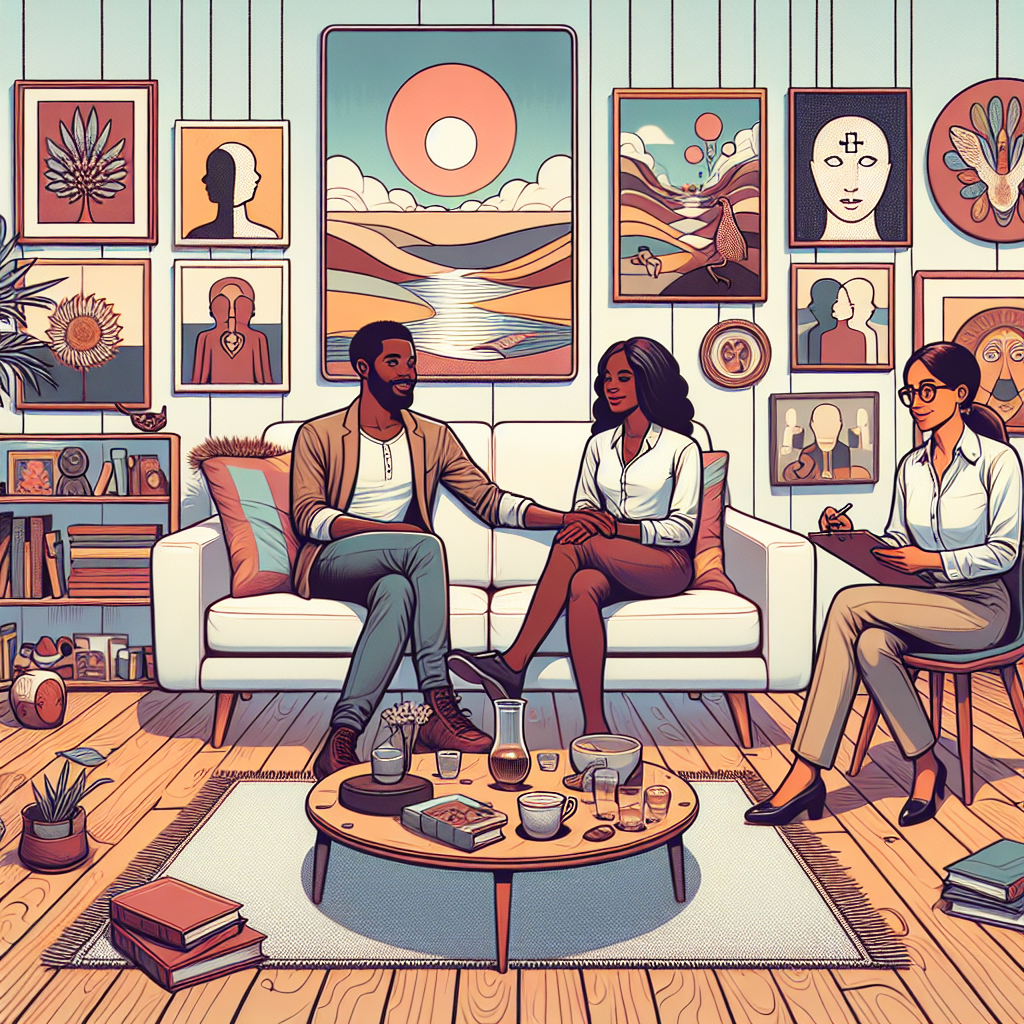Mediation for Couples with Shared Art Collections

Art Mediation for Couples: Strengthen Your Shared Collections
Introduction
Art has the power to bring people together and create strong emotional connections. For couples, shared art collections can hold significant value and meaning, representing their shared experiences and interests. However, these collections can also become a source of conflict and tension in a relationship. This is where art mediation for couples becomes essential.
Why Art Mediation for Couples is Important
Art mediation for couples is a specialized form of mediation that aims to resolve conflicts and disagreements related to shared art collections. In many cases, these conflicts can arise when couples have different opinions on the value and ownership of their art pieces. Without proper resolution, these conflicts can cause irreparable damage to the relationship.
Through art mediation, couples can find a fair and peaceful solution that preserves their relationship while also addressing the complexities of shared art collections. This process not only helps to resolve immediate issues but also creates a foundation for effective communication and decision-making in the future.
How Shared Collections Can Impact Relationships
Shared art collections can impact relationships in various ways. On one hand, they can bring couples closer by providing a shared interest and bonding experience. However, on the other hand, they can also create conflicts and disagreements that can strain the relationship.
When couples have different opinions on the value and ownership of their art pieces, it can lead to arguments and misunderstandings. These conflicts can also reveal underlying issues in the relationship, such as communication problems and power imbalances.
Identifying Potential Conflict in Shared Collections
It is essential for couples to be aware of potential conflicts that may arise in shared art collections. Some common issues include disagreements over who purchased the piece, its value, and how it should be displayed or cared for.
Additionally, couples may also have different emotional attachments to certain pieces, which can complicate the decision-making process. For example, one partner may have inherited a painting from a family member, while the other may have purchased a sculpture during a memorable trip. These sentimental attachments can make it challenging to reach a compromise.
Benefits of Utilizing Art Mediation in Relationships
The benefits of utilizing art mediation in relationships are numerous. Firstly, it provides a neutral and safe space for couples to discuss their issues and work towards a mutually agreeable solution. This allows for a fair and peaceful resolution without damaging the relationship further.
Additionally, art mediation can also help couples identify and address underlying issues in their relationship. By learning effective communication and problem-solving techniques, couples can improve their overall relationship and prevent future conflicts.
Finding a Qualified Art Mediator
When seeking art mediation for couples, it is crucial to find a qualified and experienced mediator. Look for someone who has specialized training and experience in art mediation specifically. They should also have a strong understanding of the art market and the complexities of shared art collections.
As with any mediation process, it is essential to find a mediator who is impartial, patient, and skilled in conflict resolution. Couples can ask for recommendations from trusted sources or do research to find a qualified art mediator in their area.
The Mediation Process for Shared Collections
The mediation process for shared art collections typically follows the same structure as other forms of mediation. The mediator will first meet with both partners separately to understand their perspectives and concerns. This allows them to identify common ground and areas that may require compromise.
Once the mediator has a good understanding of both parties’ goals and concerns, they will facilitate joint sessions where the couple can discuss their issues openly. The mediator will guide the discussion, encourage effective communication, and help the couple reach a mutually agreeable solution.
If necessary, the mediator may also bring in outside experts, such as an art appraiser, to provide an unbiased valuation of the art pieces in question. This can help facilitate a fair and informed decision.
Effective Communication Techniques for Couples
Effective communication is a crucial element of art mediation for couples. Without it, conflicts and misunderstandings can continue to arise even after the mediation process is complete. Here are some essential communication techniques that couples can use during art mediation and beyond:
- Active listening: This involves giving your full attention to your partner and understanding their perspective without interrupting or judging.
- Using “I” statements: Instead of using accusatory language, use “I” statements to express how you feel and what you need.
- Empathy: Showing empathy towards your partner’s feelings and concerns can help to create a more positive and productive discussion.
- Collaborative decision-making: Instead of trying to win the argument, work together with your partner to find a solution that works for both of you.
- Compromise and negotiation: Be open to making compromises and negotiating a solution that addresses both partners’ needs.
Maintaining a Healthy Relationship Through Art Mediation
Art mediation for couples goes beyond resolving immediate conflicts related to shared art collections. It also provides an opportunity for couples to learn valuable skills and techniques that can strengthen their relationship in the long run.
By addressing underlying issues and improving communication and decision-making, couples can maintain a healthy and harmonious relationship. This can also help prevent future conflicts and misunderstandings related to shared art collections and other areas of their relationship.
Strengthening Your Bond Through Art Mediation
In conclusion, art mediation for couples with shared art collections is a vital tool for maintaining a healthy and strong relationship. By addressing conflicts and improving communication, couples can preserve their bond and appreciate their shared art collections in a more positive and meaningful way.
Through the guidance of a qualified art mediator, couples can find fair and peaceful solutions that consider the complexities of shared art ownership. With effective communication and problem-solving techniques, couples can navigate the challenges of shared art collections and maintain a harmonious relationship.



